F1000022.jpg (via http://flic.kr/p/qC3pci )

F1000022.jpg (via http://flic.kr/p/qC3pci )

F1000022.jpg (via http://flic.kr/p/qC3pci )

F1000010.jpg (via http://flic.kr/p/qUq7CQ )

F1000003.jpg (via http://flic.kr/p/pXHfGc )

L1017228.jpg (via http://flic.kr/p/pXuwoQ )

1KG Bug Meat (via http://flic.kr/p/qC3nUZ )
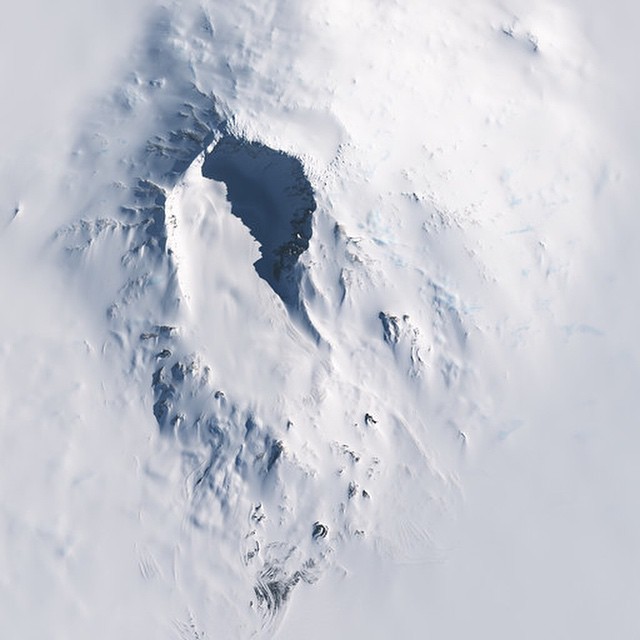
Mount Sidley is Antarctica’s highest volcano, and one of the most inaccessible large mountains in the world. Only a few scientists and adventure tourists have ever climbed it. Its huge crater, 5 km (3 mi) across, was created by a series of violent eruptions almost 5 million years ago. Many other details are still unknown: for example, its height is about 4,250 m (13,950 ft), but it has never been precisely measured with modern, GPS-based surveying techniques. A pattern of deep earthquakes has led geologists to believe that a new volcano may be building nearby to the south, although it might never reach through the ice sheet as Mount Sidley has. The ice is up to 1.5 km (1 mi) thick in this area, and covers what would be a very rugged landscape if it were exposed. Landsat 8 collected this image on the 21st. by mapbox (via http://instagram.com/p/yLi8yuTeae/)

VOID__‘2 by peterpohjola (via http://instagram.com/p/yMDzL4kxE4/)

E-Car 333


NASA’S Voyager 1 took this picture of the planet Jupiter on Saturday, Jan. 6, the first in its three-month-long, close-up investigation of the largest planet. The spacecraft, flying toward a March 5 closest approach, was 35.8 million miles (57.6 million kilometers) from Jupiter and 371.7 million miles (598.2 million kilometers) from Earth when the picture was taken. As the Voyager cameras begin their meteorological surveillance of Jupiter, they reveal a dynamic atmosphere with more convective structure than had previously been thought. While the smallest atmospheric features seen in this picture are still as large as 600 miles (1,000 kilometers) across, Voyager will be able to detect individual storm systems as small as 3 miles (5 kilometers) at closest approach. The Great Red Spot can be seen near the limb at the far right. Most of the other features are too small to be seen in terrestrial telescopes. This picture is really a combination of three images taken through color filters, then transmitted to Jet Propulsion Laboratory through the Deep Space Network’s antennas, and assembled by JPL’s Image Processing Lab. The Voyager Project is managed for NASA by Caltech’s Jet Propulsion Laboratory.
(via JPL | Space Images | First Close-up Image of Jupiter from Voyager 1)


There are now 67 confirmed cases of measles in an ongoing outbreak centered in California. According to the California Department of Public Health, 59 of the cases are in-state. Among the 34 California patients for whom vaccination status is known, 28 were unvaccinated and one had received partial vaccination. Only five were fully vaccinated. Forty-two of the California cases have been linked to an initial exposure at Disneyland or Disney California Adventure Park, and while cases were originally tied to people who visited the park in mid-December, state health officials now note other cases visited Disney parks in January. According to the CDC, the majority of measles cases reported so far during 2015 have been part of the “large, ongoing outbreak” connected with these parks.
http://io9.com/how-anti-vaxxers-ruined-disneyland-for-themselves-and–1680970446

5468 by sotblindphot (via http://flic.kr/p/qB4tZZ )

***Planet Nivalis (sketch #1) by Tamas Andok (via http://flic.kr/p/bm9jMF )

by Tamas Andok (via http://flic.kr/p/hiatca )

by Tamas Andok (via http://flic.kr/p/iAzr5M )

by Tamas Andok (via http://flic.kr/p/aSSbHc )

27may13 by anna malina (via http://flic.kr/p/euksJm )

“Poisson d'eau tiède” # XIII. © SA by Maelström Bordelum - © S.A (via http://flic.kr/p/p3Byfa )

Agrius Convolvuli. © S.A by Maelström Bordelum - © S.A (via http://flic.kr/p/aeJcL9 )

by tokioshi (via http://flic.kr/p/qvVARR )

by misterzvereff (via http://instagram.com/p/yKlxQrIjfD/)
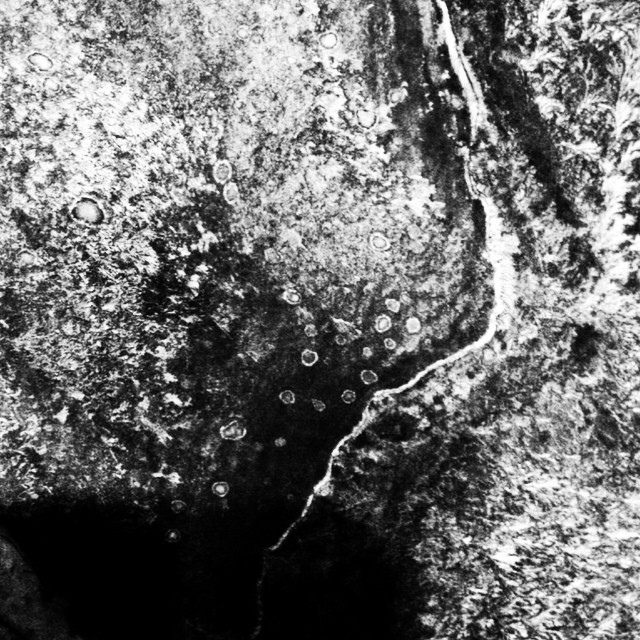
VOID__‘0 by peterpohjola (via http://instagram.com/p/yKwxbxExHo/)

20150106 (via http://flic.kr/p/qRUP3d )

20150105 (via http://flic.kr/p/pXqsKV )

20150104 (via http://flic.kr/p/qBCjqS )

20150103 (via http://flic.kr/p/pXqrBT )

20150102 (via http://flic.kr/p/qBKyng )

20150101 (via http://flic.kr/p/qBM2iM )
“
It all began simply enough. I’d just read one of those ubiquitous Internet lists called “21 Things You Didn’t Know Your iPhone Could Do.” One of them was this: I could ask Siri, “What planes are above me right now?” and Siri would bark back, “Checking my sources.” Almost instantly there was a list of actual flights — numbers, altitudes, angles — above my head. I happened to be doing this when Gus was nearby. “Why would anyone need to know what planes are flying above your head?” I muttered. Gus replied without looking up: “So you know who you’re waving at, Mommy.” Gus had never noticed Siri before, but when he discovered there was someone who would not just find information on his various obsessions (trains, planes, buses, escalators and, of course, anything related to weather) but actually semi-discuss these subjects tirelessly, he was hooked. And I was grateful. Now, when my head was about to explode if I had to have another conversation about the chance of tornadoes in Kansas City, Mo., I could reply brightly: “Hey! Why don’t you ask Siri?” It’s not that Gus doesn’t understand Siri’s not human. He does — intellectually. But like many autistic people I know, Gus feels that inanimate objects, while maybe not possessing souls, are worthy of our consideration. I realized this when he was 8, and I got him an iPod for his birthday. He listened to it only at home, with one exception. It always came with us on our visits to the Apple Store. Finally, I asked why. “So it can visit its friends,” he said.
–How One Boy With Autism Became BFF With Apple’s Siri (viafuckyeahisitthecultureyet)


The sun photographed from the same spot, at the same hour throughout different days in a year in Mars. This is known as the Martian analemma. (Earth’s Analemma) (Source)

After initially preventing him from traveling to the UK, the British government has granted Syrian-born, Sharjah-based artist Thaier Helal‘s second visa application, allowing him to attend the opening of his first solo show in London.


The Valley of the Moon by dzvereff (via http://flic.kr/p/qAKVCh )


by the_effects_of_silent_noise_ (via http://instagram.com/p/yFwzDrDBd7/)

by the_effects_of_silent_noise_ (via http://instagram.com/p/yGG5W0jBRm/)
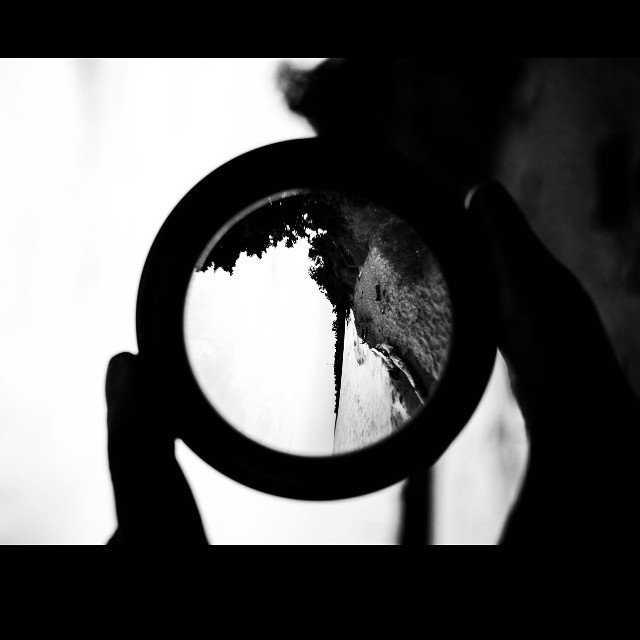
by the_effects_of_silent_noise_ (via http://instagram.com/p/yHlsSkDBSX/)

a.place.beyond.recall by jonathancastellino (via http://flic.kr/p/pVDfCW )

tuesday. by (x)99. (via http://flic.kr/p/qSDeAn )

SDO Collects Its 100 Millionth Image by NASA Goddard Photo and Video (via http://flic.kr/p/qSJEiu )

Lobaria Pulmonaria - lichen by nervous system (via http://flic.kr/p/qApN3j )

Blue Ridge Mountains, NC by Filth City (via http://flic.kr/p/qT6L5N )

NSA: deep in the wires before there were real computers by brucesflickr (via http://flic.kr/p/qT7vQU )
What does it mean for a society, when there are robots which act autonomously? Who is liable, when a robot breaks the law on its own initiative? These were some of the main questions the work Random Darknet Shopper posed. Global questions, which will now be negotiated locally. On the morning of January 12, the day after the three-month exhibition was closed, the public prosecutor’s office of St. Gallen seized and sealed our work. It seems, the purpose of the confiscation is to impede an endangerment of third parties through the drugs exhibited by destroying them. This is what we know at present. We believe that the confiscation is an unjustified intervention into freedom of art. We’d also like to thank Kunst Halle St. Gallen for their ongoing support and the wonderful collaboration. Furthermore, we are convinced, that it is an objective of art to shed light on the fringes of society and to pose fundamental contemporary questions.
https://wwwwwwwwwwwwwwwwwwwwww.bitnik.org/r/2015–01–15-statement/

Photography of Iceland’s volcanic rivers by Andre Ermolaev

1980-07 Quais de Mariemont et quai de l’industrie, Molenbeek-Saint-Jean par M.H
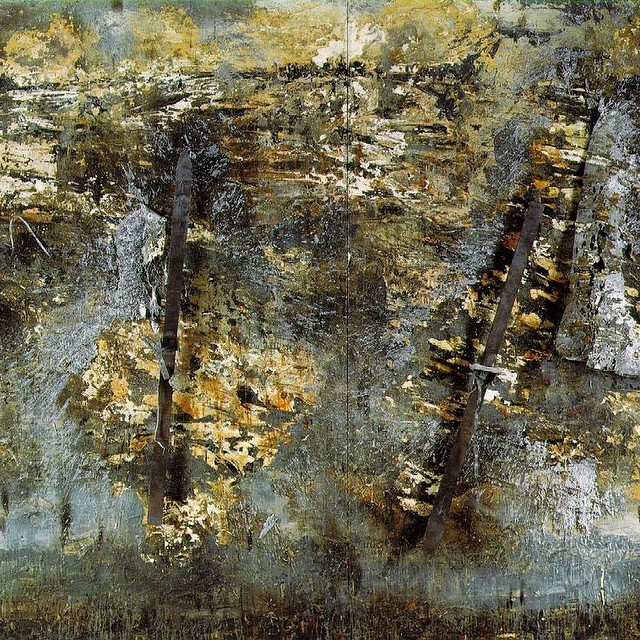
Anselm Kiefer (1945-) by wolfgang7268 (via http://instagram.com/p/yENL6BCTK8/)

IMGP0296 by Giona4 (via http://flic.kr/p/qyi1Zn )
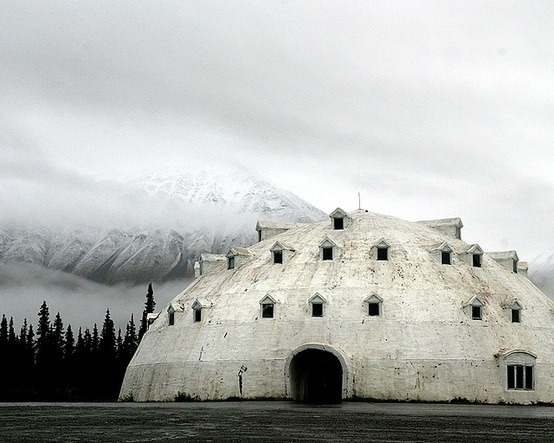
An abandoned igloo resort hotel in Alaska. photo: Sara Heinrichs




#auroraborealis #nature_of_our_world #visitnarvik #visitnorway #woodland #tv_longexposure #Ic_trees #ilovenorway #igscandinavia #DREAM_IMAGE #global_secrets #igworldtrip_members #rsa_dark by gretemy (via http://instagram.com/p/vaA2kImtVh/)

Exploring the Atacama desert in Chile to scout for locations for the Seeker art project, October 2014. #mars #communityart by angelovermeulen (via http://instagram.com/p/yC500oj3H8/)

by jaromilrojo (via http://instagram.com/p/x9tx6NG0zT/)

in Liwan District by paolobarzman (via http://flic.kr/p/qPtmMu )

. by Anna Paola Guerra (via http://flic.kr/p/qzjqYS )

ariphoto2014_2_17 by Shinya Arimoto (via http://flic.kr/p/qzuUot )

75k Futures by Gunnar Green & Bernhard Hopfengärtner
Named after the source of a flash crash of the American stock market in May 2010, caused by 75,000 algorithmically traded futures, 75,000 Futures is a book illustrating algorithms in action, with data sourced from the HFT research firm Nanex. The book explores a typology of algorithmic actors, whose motives and strategies must be reversed-engineered from market behaviour, exposing a systems aesthetic of structured logic backed up by an ambiguous rationality.



. by neon.tambourine (via http://flic.kr/p/pUFaEk )

traces. by jonathancastellino (via http://flic.kr/p/qwG13T )

Beagle-2 on Mars by europeanspaceagency (via http://flic.kr/p/qxfZtZ )

friday. by (x)99. (via http://flic.kr/p/qPXbg2 )
“Mr. Teich said he kept an obsolete military GPS system in his office to remind him of the parallels between that technology and thermal imaging. Once used just in military missiles and planes, GPS receivers are now standard in many consumer devices.”
–Thermal Imaging Allows for Picturing the Invisible - NYTimes.com (viaiamdanw)
“
The founders of Fairphone said from the word go that creating a totally fair phone would be a monumental task, because of the labyrinth of suppliers and companies involved. So far, only two of the minerals in the phone – tin and tantalum – come from conflict-free validated mines. Fairphone believe the only way to make a phone genuinely fair is through trying to incrementally produce one and to keep adjusting it while putting pressure on the supply chain. Its website shows behind the scenes of its journey, and it should be commended for trying to change the status quo.
–Fairphone review: ethics trumps everything else | Technology | The Guardian (viaiamdanw)
“
Once you adopt skepticism toward the algorithmic- and the data-divine, you can no longer construe any computational system as merely algorithmic. Think about Google Maps, for example. It’s not just mapping software running via computer—it also involves geographical information systems, geolocation satellites and transponders, human-driven automobiles, roof-mounted panoramic optical recording systems, international recording and privacy law, physical- and data-network routing systems, and web/mobile presentational apparatuses. That’s not algorithmic culture—it’s just, well, culture. If algorithms aren’t gods, what are they instead? Like metaphors, algorithms are simplifications, or distortions. They are caricatures. They take a complex system from the world and abstract it into processes that capture some of that system’s logic and discard others. And they couple to other processes, machines, and materials that carry out the extra-computational part of their work.
–The Cathedral of Computation - Ian Bogost (viaalgopop)
“Fifteen seconds before the transfer, the bluish-green LEDs turn yellow and a voice tells you autopilot will be turned off. Ten seconds before the transfer, the LEDs turn red and the steering wheel extends to meet you. If you fail to respond, the car activates its hazard lights and slows to a stop, moving to the shoulder if possible.”
–I Rode 500 Miles in a Self-Driving Car and Saw the Future. It’s Delightfully Dull | WIRED (viaiamdanw)

PETSCII by JP LeBreton, made in his EDSCII software. source




An Uazik van in the tundra outside of Oymyakon. The soviet-era vans are widely favored in Siberia for their ability to stand up to the cold, and they are known as “loaves” for their distinctive shape.

world trade center one by Rocco Carnevale (via http://flic.kr/p/pRw3dd )

Electricity by Laurent Jacques (via http://flic.kr/p/qNpigk )

by (Jt) (via http://flic.kr/p/qN4UKM )

IMG_5214.jpg by Loop.pH (via http://flic.kr/p/qNzAnP )

by cliftonbarker (via http://flic.kr/p/pTe4Tz )

Television Newspaper by brucesflickr (via http://flic.kr/p/pQTT1Y )

Automatiek by Kaometet (via http://flic.kr/p/qLjFAo )

_DSC2703 by Pierre Wayser (via http://flic.kr/p/qLuJDk )

houton derelict - sepia hipstamatic by ingrid_b21 (via http://flic.kr/p/qu6Kia )

lost land autopsy by lars on mars (via http://flic.kr/p/qufbmF )

by robert_brecevic (via http://instagram.com/p/xto0OZEBLQ/)

ca_20140208_001 by Costică Acsinte Archive (via http://flic.kr/p/jRosZ4 )

Model Room, Olafur Eliasson by CheshireCathy (via http://flic.kr/p/qHwDSG )

Model Room, Olafur Eliasson by CheshireCathy (via http://flic.kr/p/pNPmT3 )
The war will go on until it doesn’t, until it runs out of fuel and the historians take over, arguing about who or what won. I no longer expect to see an end in my lifetime. It will take a generation, and many enormous geopolitical shifts, before the wheels of this juggernaut shudder to a halt. Until there are no more self-dramatising young men who prefer the abstraction of death to living a meaningful life, until there are no more wealthy pious bigots to fund them, until there are no more disenfranchised migrants pressed against the border fence and no more hard-faced “realists” eager to turn the war dial up to 11, this will go on and we will have to live through it.
“
On the future of the U.S., or of Western civilization in general, I tend to be quite pessimistic. Perhaps that is simply because “collapse” is what I do. As an archaeologist, I have excavated single trenches, just a few meters deep, in which you can see stratigraphic levels of several civilizations. We find layers of artifacts and evidence indicating periods of great prosperity, but always separated by levels of burned earth, ash and artifacts that reflect the epochs of social disintegration, chaos and tragedy that seem to conclude the achievements and aspirations of every society. With that caveat about my gloomy perspective, I would say that today I see most of the symptoms of societies on the brink of collapse, not just in the U.S., but in the tightly interconnected societies of Western civilization – now essentially world civilization. … With apologies to the green movement, “sustainability” is a myth. History and archaeology show that societies are always moving to the edge of crisis, “falling forward” through growth, but then responding (often successfully) to the problems created. What we can hope for is that with a somewhat more controlled level of growth, and with longer-term preparations for change, we can keep responding to the inevitable smaller crises, as they arise, and continue to postpone until later and later the (perhaps ultimately inevitable) end of our civilization.
–The real Indiana Jones on why Western civilization is a bubble (viafuckyeahdarkextropian)
Manichaeism was a major Gnostic religion that was founded by the Iranian prophet Mani (c. 216–276 AD) in the Sasanian Empire. Manichaeism taught an elaborate dualistic cosmology describing the struggle between a good, spiritual world of light, and an evil, material world of darkness. Through an ongoing process which takes place in human history, light is gradually removed from the world of matter and returned to the world of light whence it came. Its beliefs were based on local Mesopotamian gnostic and religious movements.
Manichaeism thrived between the third and seventh centuries, and at its height was one of the most widespread religions in the world. Manichaean churches and scriptures existed as far east as China and as far west as the Roman Empire. It was briefly the main rival to Christianity in the competition to replace classical paganism. Manichaeism survived longer in the East than in the West, and it appears to have finally faded away after the 14th century in southern China, contemporary to the decline in China of the Church of the East. While most of Mani’s original writings have been lost, numerous translations and fragmentary texts have survived.
Until discoveries in the 1900s of original sources, the only sources for Manichaeism were descriptions and quotations from non-Manichaean authors, either Christian, Muslim, Buddhist or Zoroastrian. While often criticizing Manichaeism, they also quoted directly from Manichaean scriptures. This enabled Isaac de Beausobre, writing in the 18th century, to create a comprehensive work on Manichaeism, relying solely on anti-Manichaean sources.


Food so good it defies words. #tipplingclub by honorharger (via http://instagram.com/p/xpEv3Bsup0/)

by lluminaria_ (via http://instagram.com/p/xp2gYCxEfj/)
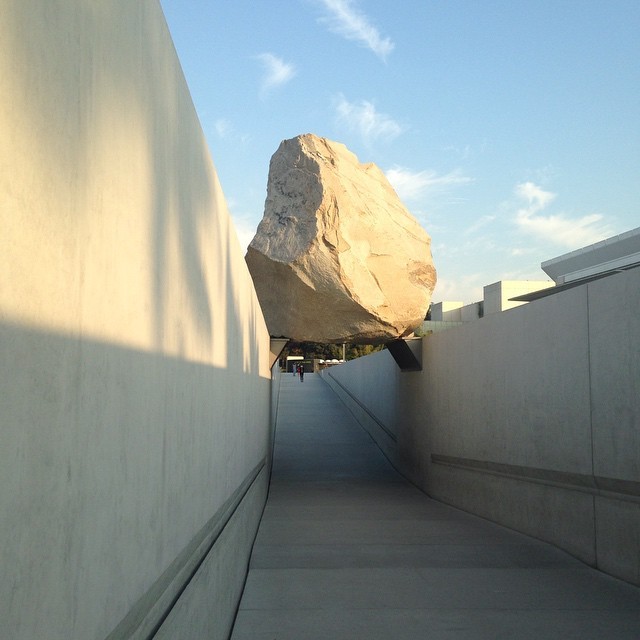
Obligatory picture of Michael Heizer’s Levitated Mass, 2012 at @lacma The granite stone is 340 tons and stands above a 456 foot slot below. According to the press materials, Heiser conceived of the work in 1969, but didn’t find the perfect rock until decades later. by frieze_magazine (via http://instagram.com/p/xp29z2SgLf/)

2015🌙 by misterzvereff (via http://instagram.com/p/xov3KdIjfs/)
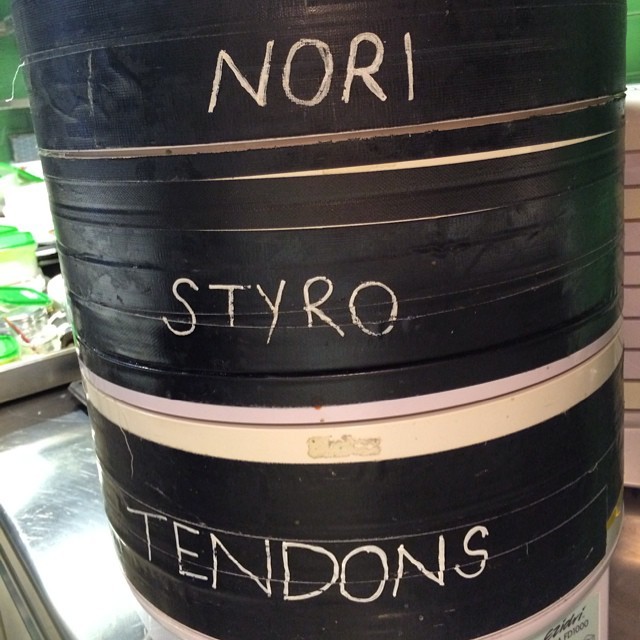
just another night in singapore with @z.zkt by honorharger (via http://instagram.com/p/xo32CTMulc/)

days of chaos by paolobarzman (via http://flic.kr/p/qJGxS5 )